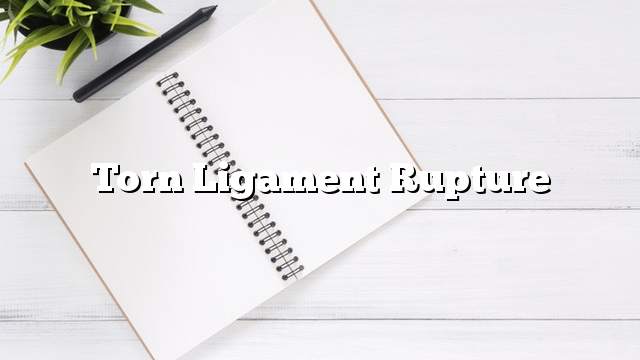In our daily life we often experience many injuries that may affect our feet, especially our ankles, and lead to pain and inability to move our feet, as we climb the stairs, fall from a high place or while running, and when we go to consult The doctor diagnoses the condition as rupture of the foot ligaments.
Tearing ligaments is the injury of the ligaments that connect the bones to each other when collected and met with the joint and rupture occurs as a result of the extension of these ligaments more than the normal situation, and usually occur as a result of sudden movement when falling or jump or severe torsion.
Symptoms of ligament rupture in the foot:
1 – acute pain sensation.
2 – exposure to inflammation.
3 – swelling occurs either in the joint or areas around it.
4 – bruising and skin discoloration.
5. The patient loses the ability to move the injured party.
6 – drop in elastic joints after injury.
As for the causes of ligament rupture in the foot:
1 – the occurrence of rapid movement and sudden resulting in the fall of the injured or a twist in the foot.
2 – exposure to the knee or ankle to a strong blow led to rupture ligaments joints.
3 – the injury occurred from a high place.
4. Exposure to ankle sprain while walking or jogging.
5 – the foot occurrence of cars or bicycles as they move.
Certain areas of the foot are more susceptible to rupture of ligaments than others:
– Foot Ankle.
-knee.
– Foot arches.
First aid for the injured of the ligament rupture in the foot:
1. Fix the patient’s foot and protect it from the risk of infection again by fixing it either by the lake or using any stick.
2. Rest the injured side, but do not refrain from doing some light sports so as not to prevent them from not adapting to movement.
3. Cool the affected area by placing a cold cloth, a melting snow bath or a cold-filled drink. It is the best way to reduce the swelling caused by the injury. Try to put the ice as quickly as possible after the injury, and be careful When using ice for long periods it works to destroy the foot tissue.
4. Squeeze the affected area by placing a compressive strap or padding.
5. Lift the affected limb above the heart level as much as possible to prevent or reduce swelling.
If you hear a knock or an instrument when the joint is damaged or you can not move the joint, there can be a complete rupture of the ligaments. Go to the doctor immediately and put cold water compresses on the road if you notice that there is fever or redness in the affected area , There is a high probability that you have been infected, failure to get treatment quickly or if the condition does not improve for a long time can increase the injury and become a chronic pain, check the medical again and possibly surgery.
Dear patient do not underestimate tear ligaments and consult your doctor immediately, leaving the infection without treatment may lead to the aggravation of the infection and this is what should be avoided.
